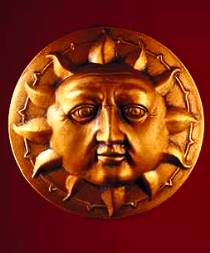1 April 2001
"Light Bricks" Set To Save Electricity
by Kate Melville
 A new co-polymer based plastic brick is the key to what authorities hope will put an end to California's worsening energy crisis. The bricks, developed by Korean scientists, are the subject of a top-level meeting this weekend between US energy officials and the company manufacturing the revolutionary plastic bricks, Brasseye Industries.
A new co-polymer based plastic brick is the key to what authorities hope will put an end to California's worsening energy crisis. The bricks, developed by Korean scientists, are the subject of a top-level meeting this weekend between US energy officials and the company manufacturing the revolutionary plastic bricks, Brasseye Industries.
"Light bricks", as they have become known, are the size of an ordinary brick but vastly more complex. One commentator described the light bricks as one of the most important inventions of the century. "These bricks save energy and are environmentally friendly - what more could you ask for? We expect that an end to the power crisis is imminent", said Alabaster Codify, Korean light-brick researcher. "These light bricks will save an estimated $4BN a year in electricity across the state."
The bricks themselves are a cutting-edge example of complex nano-manufacturing. Each brick contains around 16 million microscopic boxes that are finished with a highly reflective mirror coating. Each of the microscopic boxes has a nano motor attached to a hinge which allows the box to open and close in fractions of a millisecond. This very rapid opening and closing of the tiny boxes allows them to function as "light traps".
The procedure for using the bricks is not complex. Bricks are placed in the sun and as each of the micro-boxes is filled with light it snaps shut trapping the light. At night, the micro-boxes can be programmed to open up and release their trapped light thus providing a safe renewable form of energy for lighting.
Scientists estimate that a dozen light bricks could light the average suburban home for around 8 hours. And improvements in performance are just around the corner. "We are currently trapping around 8 billion photons per micro-box but we expect to be able to increase this to around 64 billion photons which will increase light output by a factor of eight", said Codify. This will be achieved by the use of nano-scale hydraulic compressors attached to each micro-box which will "compress" the photons so that they under greater pressure allowing more photons to be stored per box.
Early experiments using light compression have however been discouraging. "Because the photons are stored under such high pressure, they escape from the brick in a bright flash. Users have reported a brightness level similar to a photographic flash gun which is clearly not viable", said Codify.
Research is continuing and the first agreement to import light-bricks is expected to be ratified on April 1st.
